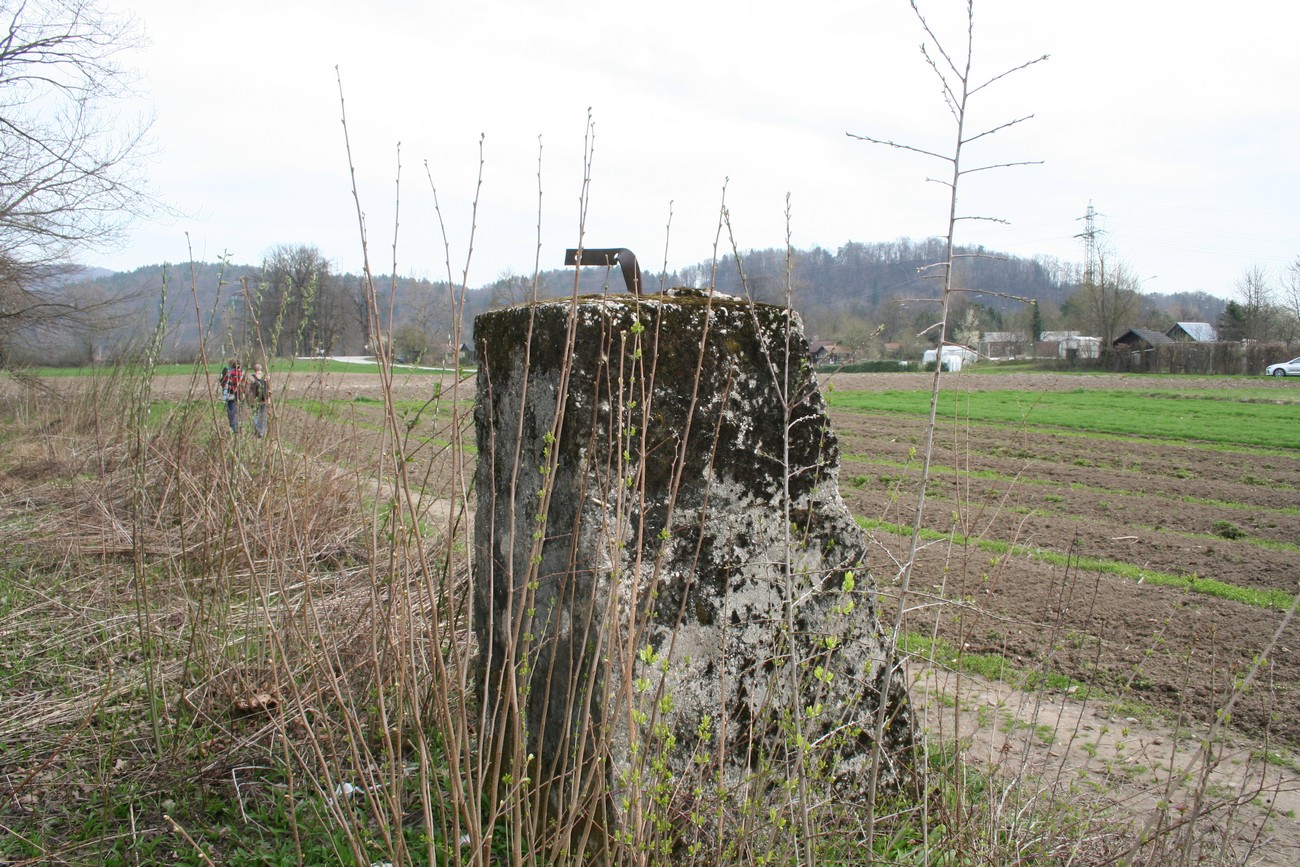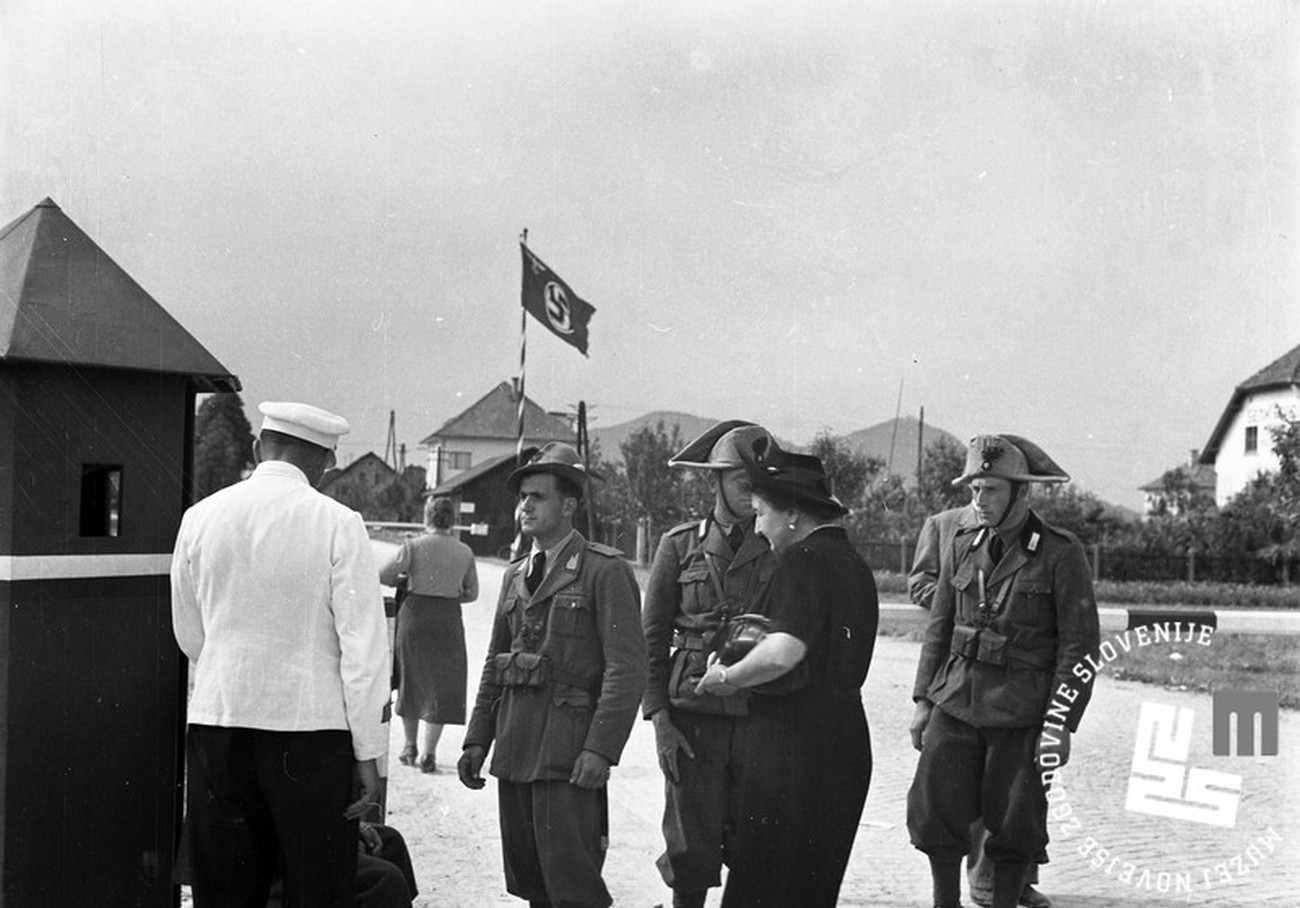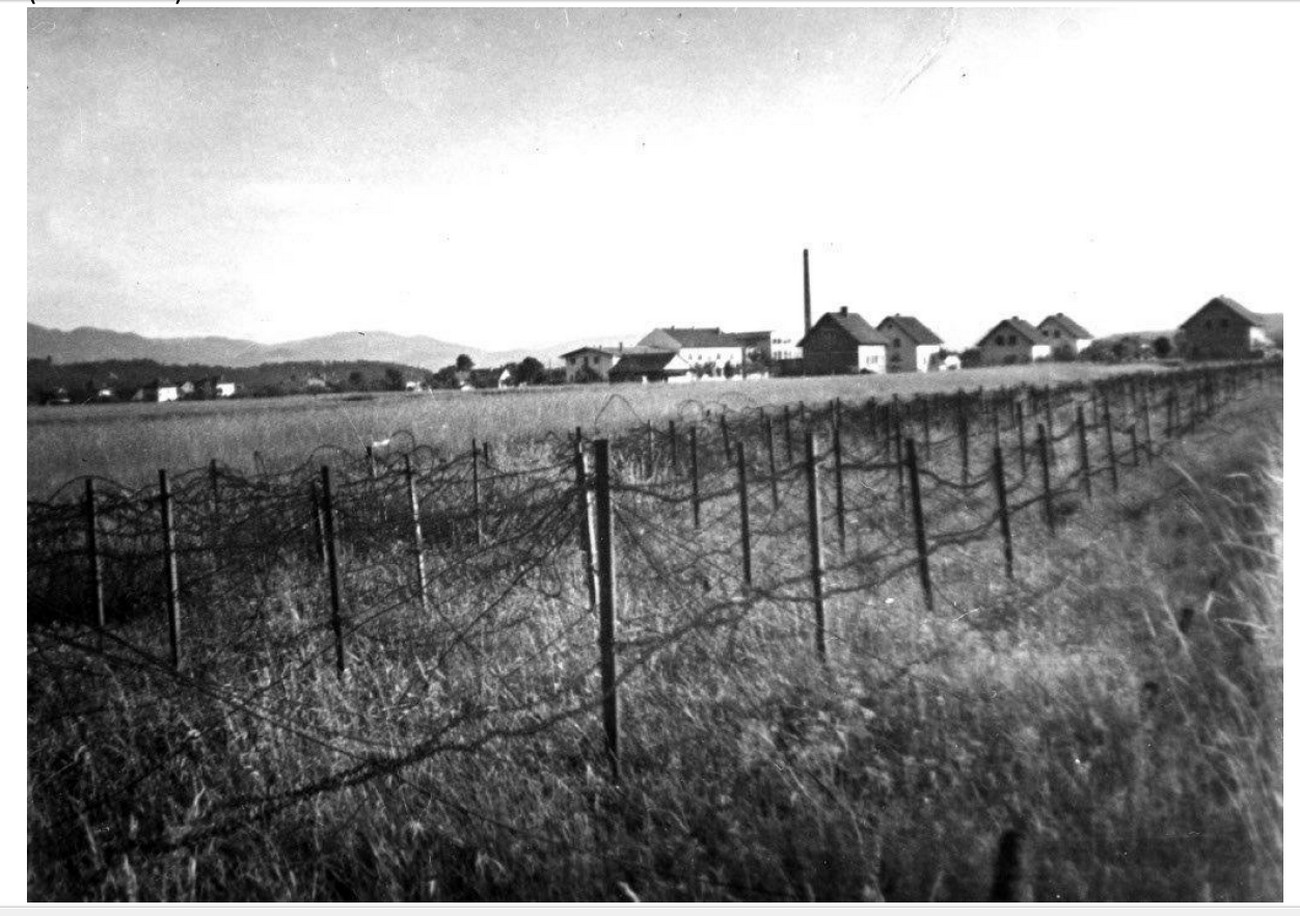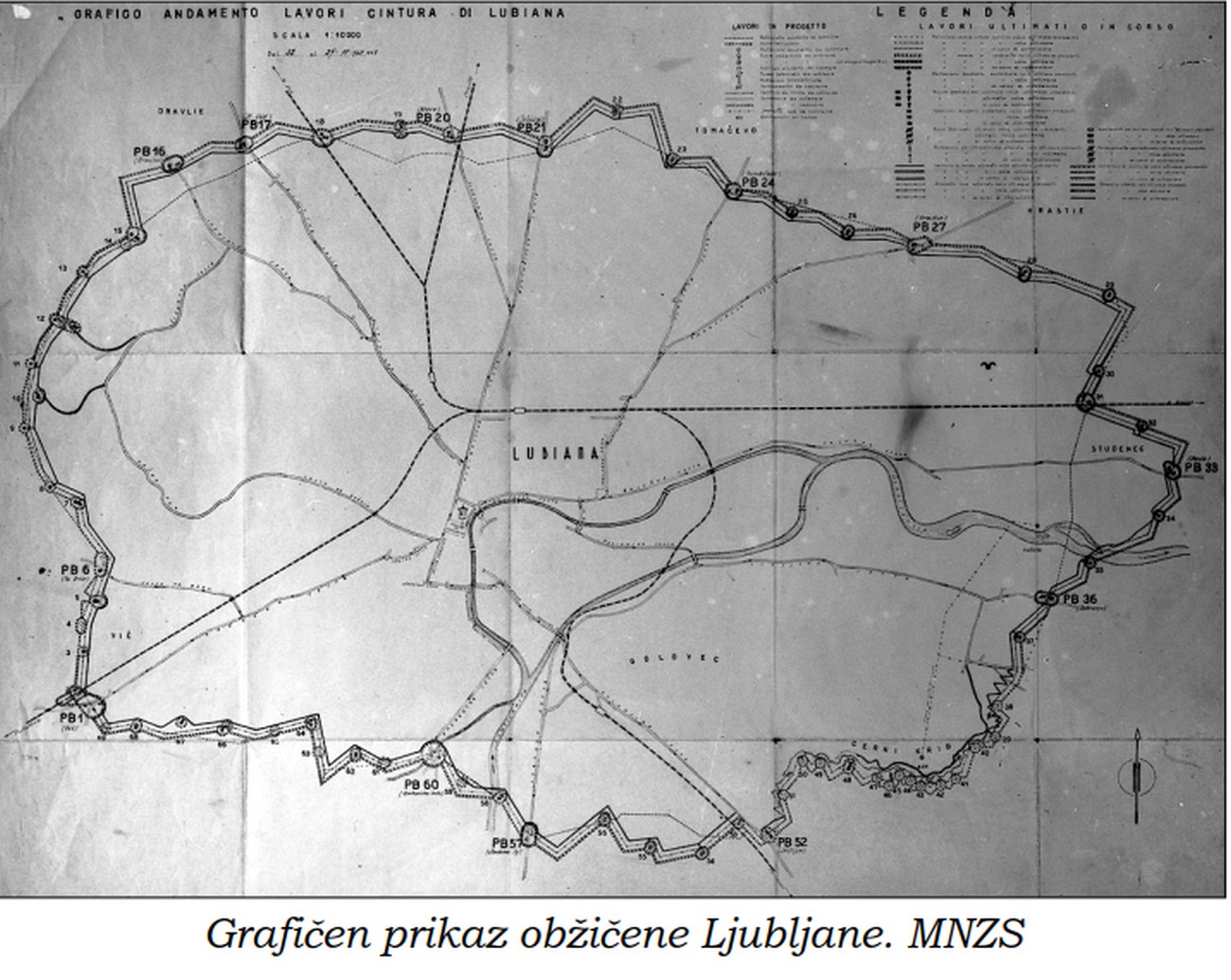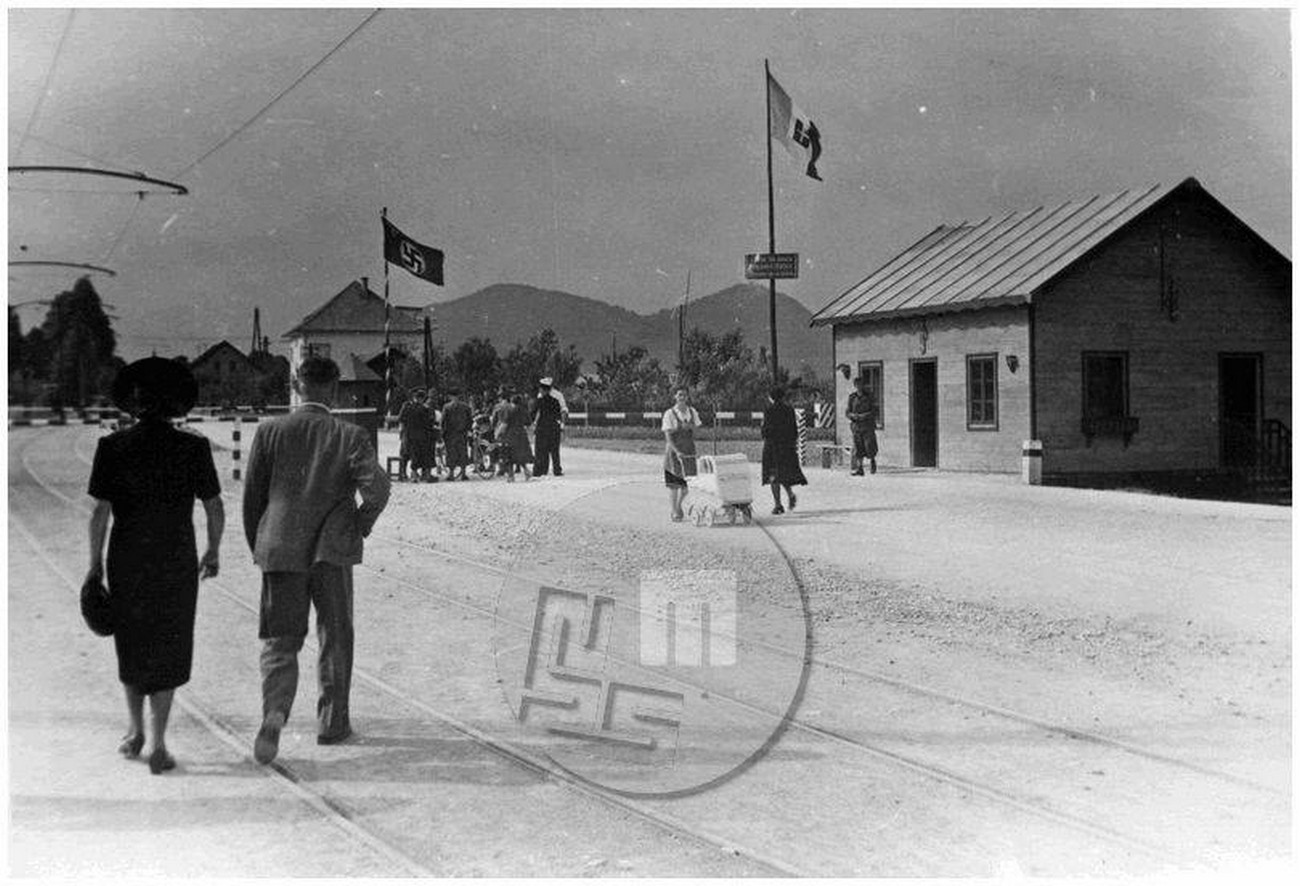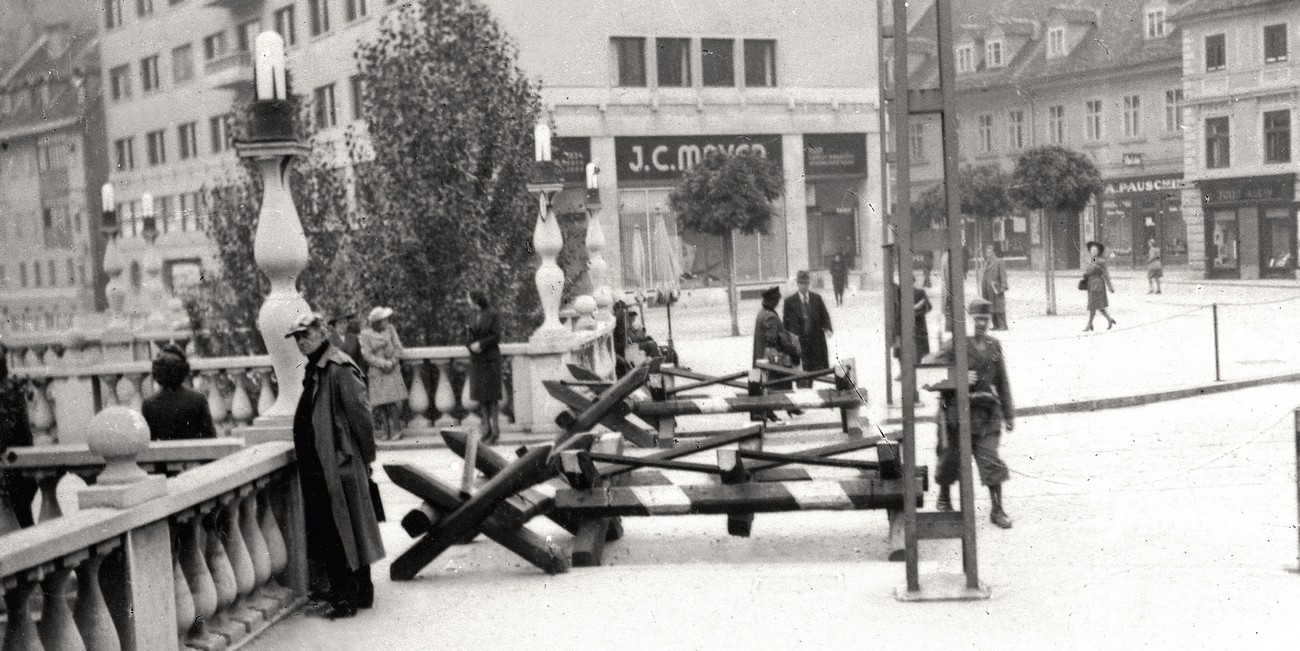On 6 April 1941, the people of Ljubljana were surprised by the sounds of sirens and planes, which announced the start of World War II in Slovenia. Five days later, Italian soldiers marched triumphantly into the city, seized the important buildings and bridges, and hung the Italian tricolour on top of Ljubljana Castle. Ljubljana became the seat of the Province of Ljubljana, while its northern district was severed by the border between the Italian and German occupier. At first, the border ran along the Sava River but the Germans later moved it to the right bank of the river. The city thus lost its important economic and agricultural hinterland.
The population felt the effects of occupation at every step. The administrative and political system was altered, the economy served military needs, and the people were living under the pressure of denationalisation and mortal danger. Their daily lives were also drastically affected by the fortification of the city, which began in 1942 when the Province of Ljubljana was declared a military area. In February, the city was enclosed by barbed wire, building material was confiscated for fortification needs, owners were dispossessed, families evicted, and buildings were torn down. They started building concrete bunkers, defensive walls and heavy artillery stations in strategic locations. The city was also being fortified from within. It was divided into several zones (e.g. the city centre with the occupier’s most important institutions, the broad centre, and the peripheral area), which were partitioned off with knife-rests and guardhouses; in fear of potential resistance they also built bunkers in the city itself (e.g. on Rožnik Hill). Thus the people of Ljubljana found themselves trapped within a heavily fortified, guarded and difficult to penetrate ring of wire and concrete, which nevertheless did not prevent the resistance movement.
A similar situation occurred after Italy capitulated in 1943. In the first few days after the Germans had seized power, the border crossings were unguarded, but this was soon followed by the introduction of strict control and a severe denationalisation policy. People could not move freely until the end of the war, which was announced by sirens – just as its beginning had been. The people of Ljubljana experienced true freedom on 26 May 1945, when all the checkpoints on the “Ljubljana border” were opened on the day that Josip Broz - Tito arrived in the capital. This marked the end to the 1,170 days the city had spent closed off, and a river of its residents wound its way to the previously inaccessible outskirts.
